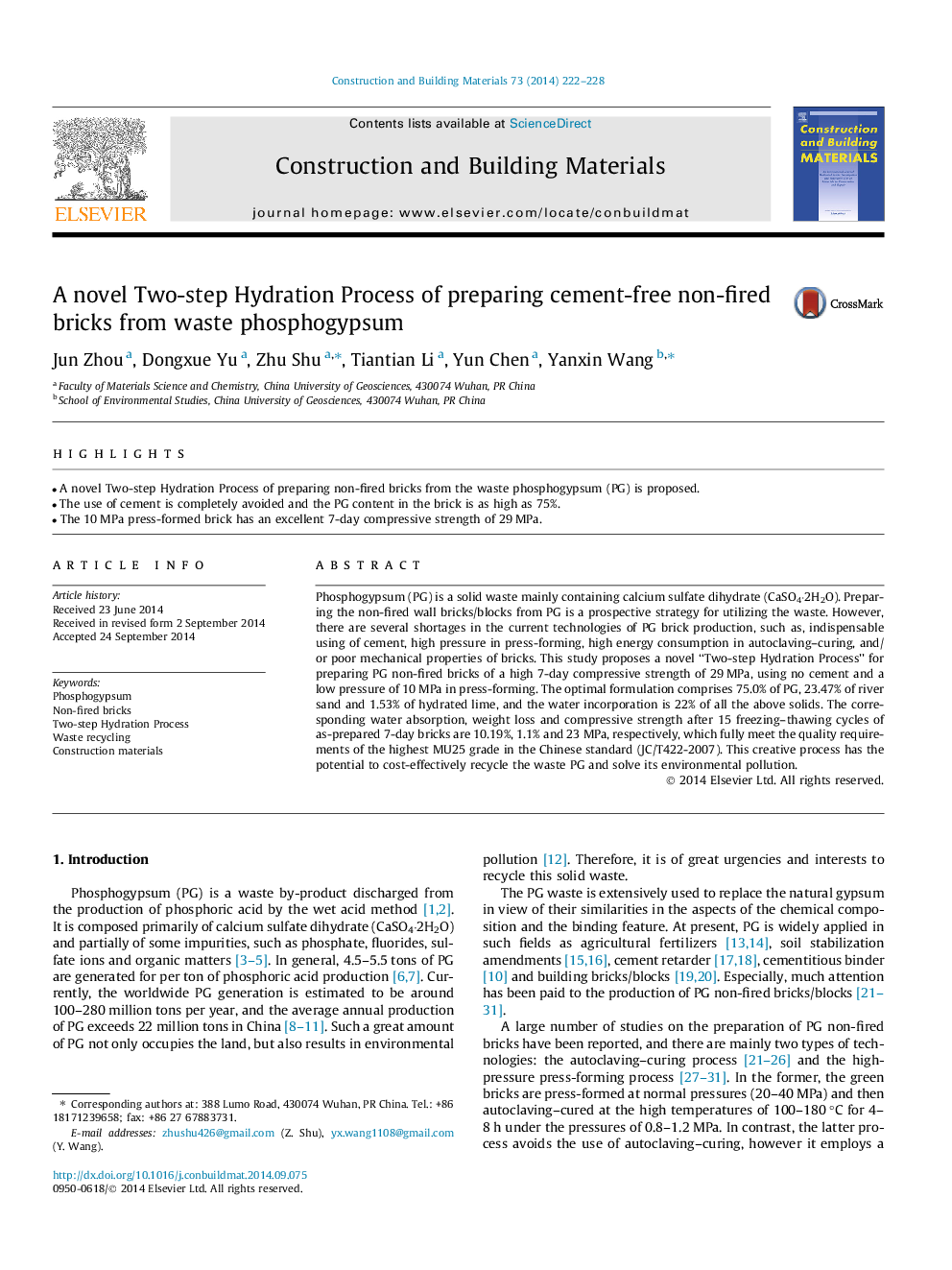| Article ID | Journal | Published Year | Pages | File Type |
|---|---|---|---|---|
| 6722087 | Construction and Building Materials | 2014 | 7 Pages |
Abstract
Phosphogypsum (PG) is a solid waste mainly containing calcium sulfate dihydrate (CaSO4·2H2O). Preparing the non-fired wall bricks/blocks from PG is a prospective strategy for utilizing the waste. However, there are several shortages in the current technologies of PG brick production, such as, indispensable using of cement, high pressure in press-forming, high energy consumption in autoclaving-curing, and/or poor mechanical properties of bricks. This study proposes a novel “Two-step Hydration Process” for preparing PG non-fired bricks of a high 7-day compressive strength of 29 MPa, using no cement and a low pressure of 10 MPa in press-forming. The optimal formulation comprises 75.0% of PG, 23.47% of river sand and 1.53% of hydrated lime, and the water incorporation is 22% of all the above solids. The corresponding water absorption, weight loss and compressive strength after 15 freezing-thawing cycles of as-prepared 7-day bricks are 10.19%, 1.1% and 23 MPa, respectively, which fully meet the quality requirements of the highest MU25 grade in the Chinese standard (JC/T422-2007). This creative process has the potential to cost-effectively recycle the waste PG and solve its environmental pollution.
Related Topics
Physical Sciences and Engineering
Engineering
Civil and Structural Engineering
Authors
Jun Zhou, Dongxue Yu, Zhu Shu, Tiantian Li, Yun Chen, Yanxin Wang,
